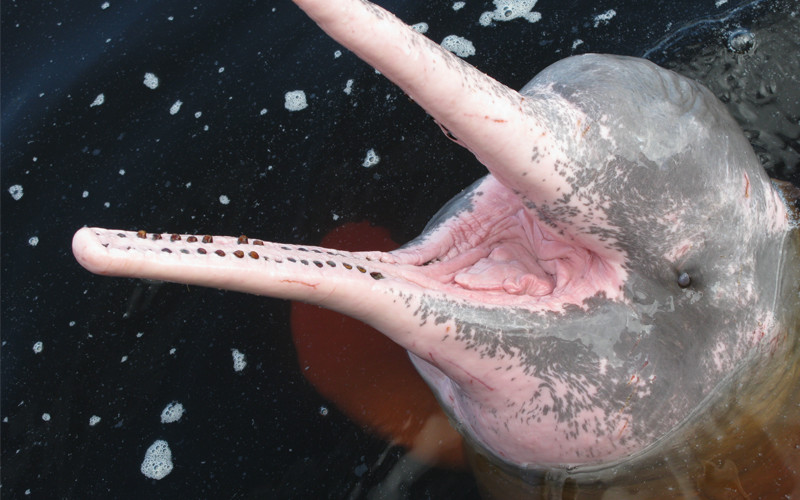River Dolphins Facts – Freshwater Dolphins
Introduction
There are only five species of dolphins that are able to thrive in freshwater and the Amazon River Dolphin is one of them. Many people assume that all dolphins live in saltwater so this is interesting to learn if you weren’t aware of it. There are several subspecies of River Dolphins to learn about.
Description
Depending on the location where they reside, River Dolphins will vary in size. Some of them can be up to 8 feet long but most of them are much smaller than that. They can also be found in a variety of colors. Some that you are known to exist include gray, black, brown, pink, yellow, and white. Due to the many different colors, they are often mistaken for other forms of aquatic life.
Distribution
The River Dolphin, as the name implies, lives in Rivers and that means they are able to survive in freshwater. They tend to stick to the brackish and coastal regions. They are found in the
Amazon, Ganges, Yangtze, Mekong, and Indus Rivers. Many of these rivers are home to very poor villagers and the locations can be very dense.
Plenty of these rivers are filled with dark, murky water and plenty of pollution. What is very interesting is that they can live in conditions that other species of dolphins would not be able to. It isn’t understood why this is possible, and more research has to be done. With so few species being able to live in freshwater, there are some theories but no definite answers at this time.
Behavior
River Dolphins are very social, and like others, they form pods. There can be just a few of them or more than 100 in a pod. They do form very strong bonds and they are quite protective of each other. The young tend to be secured in the middle of the pod in order to keep them safe. The females have also been noted to care for the young of each other in a cooperative effort.
These dolphins are believed to be very social and to have a complex hierarchy that can be hard to fully understand. They tend to have some pods that have primarily females or males in them. This could be part of their social organization.
Feeding
Fish are the main components of the diet for the River Dolphin, and they can eat large amounts of them daily. They use a variety of differenttechniques to get the schools of fish with ease. Usually, these efforts involve teamwork and collaboration that is very in sync and interesting to observe. For larger pods, they often break up into smaller groups for feeding purposes to be carried out.
Reproduction
The time of year for mating can vary based on the location of the River Dolphin. The females usually are ready to mate around 8 years of age and for the males it is about 10 years old. The males may heavily compete with each other for mating. The young will be born from 10 to 12 months later, tail first.
The pod is very protective and they will help the mother during the birthing process. They will protect the young calf and help it to the surface for air. They will also help keep predators away. The young will grow rapidly due to the fat content found in the milk that the mother produces. They will drink the milk for 1 ½ to 2 years, but they will also start to consume fish when they are about 6 months old.
Conservation Status and Threats
The River Dolphin is considered to be in a range from vulnerable to critically endangered. It is hard to get a good idea of the number of them due to the different species and their habitat. There are plenty of issues for the River Dolphin to worry about in their natural habitat. They may be caught up in fishing nets or collide with boats. Heavily pollution has played a vital role in the reduction of numbers of them in many locations.
Some of the conservation efforts involve fishing with better equipment and tools. However, since the rivers where plenty of the dolphins live are around very poor cultures that can be tough to improve. Overfishing is also a concern as the villagers heavily depend on the food for survival. Yet that can leave a lack of food for the dolphins to survive. Pollution problems are also higher in areas where they don’t have proper water and sewer systems in place.
One of the River Dolphins called the Baiji, has declared functionally extinct in December of 2006. The last time one of them was seen in the wild was in 2004. While there were some reports in 2007 of sightings of one in the Yangtze River, it couldn’t be confirmed.

